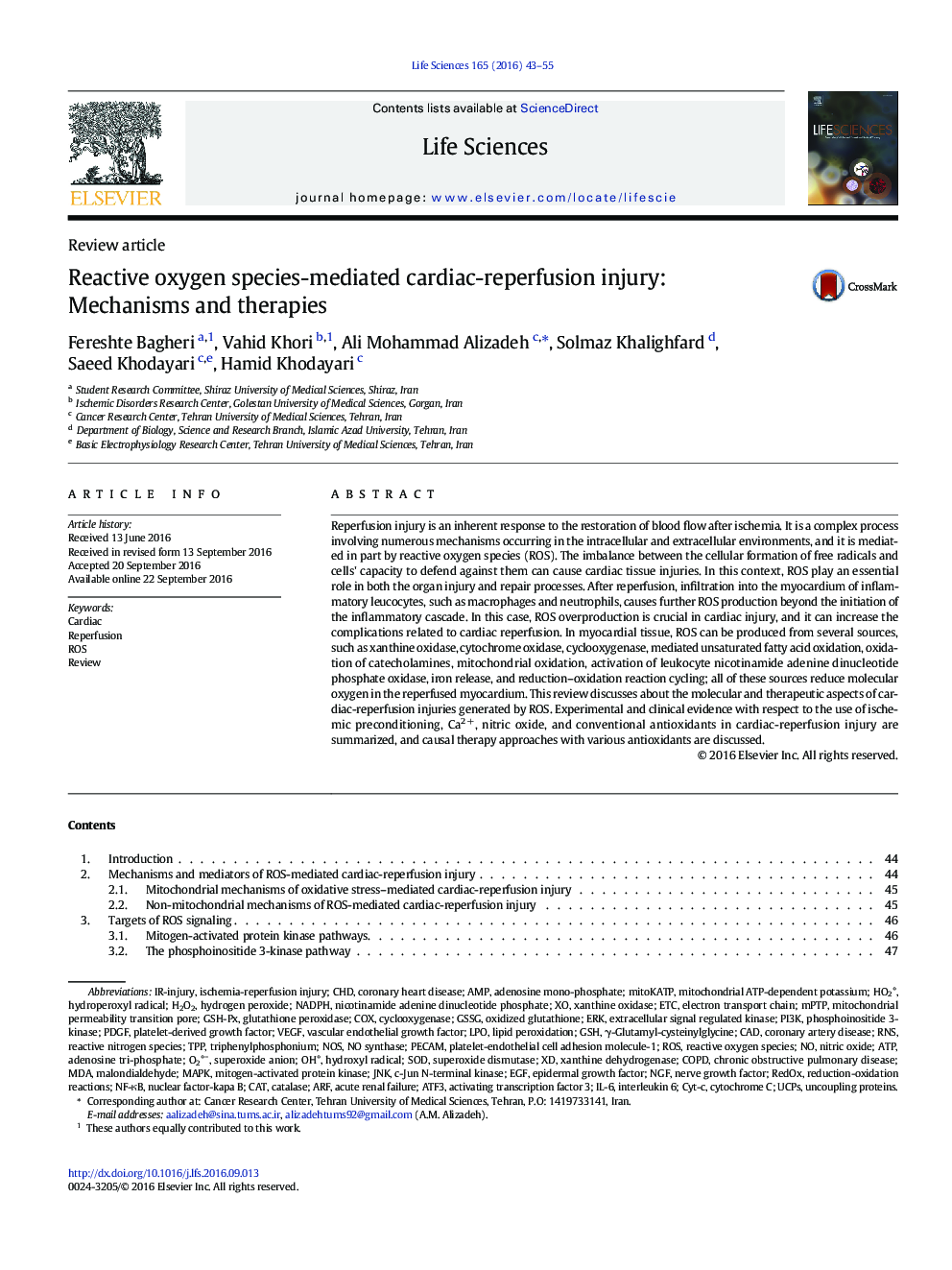| کد مقاله | کد نشریه | سال انتشار | مقاله انگلیسی | نسخه تمام متن |
|---|---|---|---|---|
| 5557149 | 1560563 | 2016 | 13 صفحه PDF | دانلود رایگان |
Reperfusion injury is an inherent response to the restoration of blood flow after ischemia. It is a complex process involving numerous mechanisms occurring in the intracellular and extracellular environments, and it is mediated in part by reactive oxygen species (ROS). The imbalance between the cellular formation of free radicals and cells' capacity to defend against them can cause cardiac tissue injuries. In this context, ROS play an essential role in both the organ injury and repair processes. After reperfusion, infiltration into the myocardium of inflammatory leucocytes, such as macrophages and neutrophils, causes further ROS production beyond the initiation of the inflammatory cascade. In this case, ROS overproduction is crucial in cardiac injury, and it can increase the complications related to cardiac reperfusion. In myocardial tissue, ROS can be produced from several sources, such as xanthine oxidase, cytochrome oxidase, cyclooxygenase, mediated unsaturated fatty acid oxidation, oxidation of catecholamines, mitochondrial oxidation, activation of leukocyte nicotinamide adenine dinucleotide phosphate oxidase, iron release, and reduction-oxidation reaction cycling; all of these sources reduce molecular oxygen in the reperfused myocardium. This review discusses about the molecular and therapeutic aspects of cardiac-reperfusion injuries generated by ROS. Experimental and clinical evidence with respect to the use of ischemic preconditioning, Ca2Â +, nitric oxide, and conventional antioxidants in cardiac-reperfusion injury are summarized, and causal therapy approaches with various antioxidants are discussed.
360
Journal: Life Sciences - Volume 165, 15 November 2016, Pages 43-55
